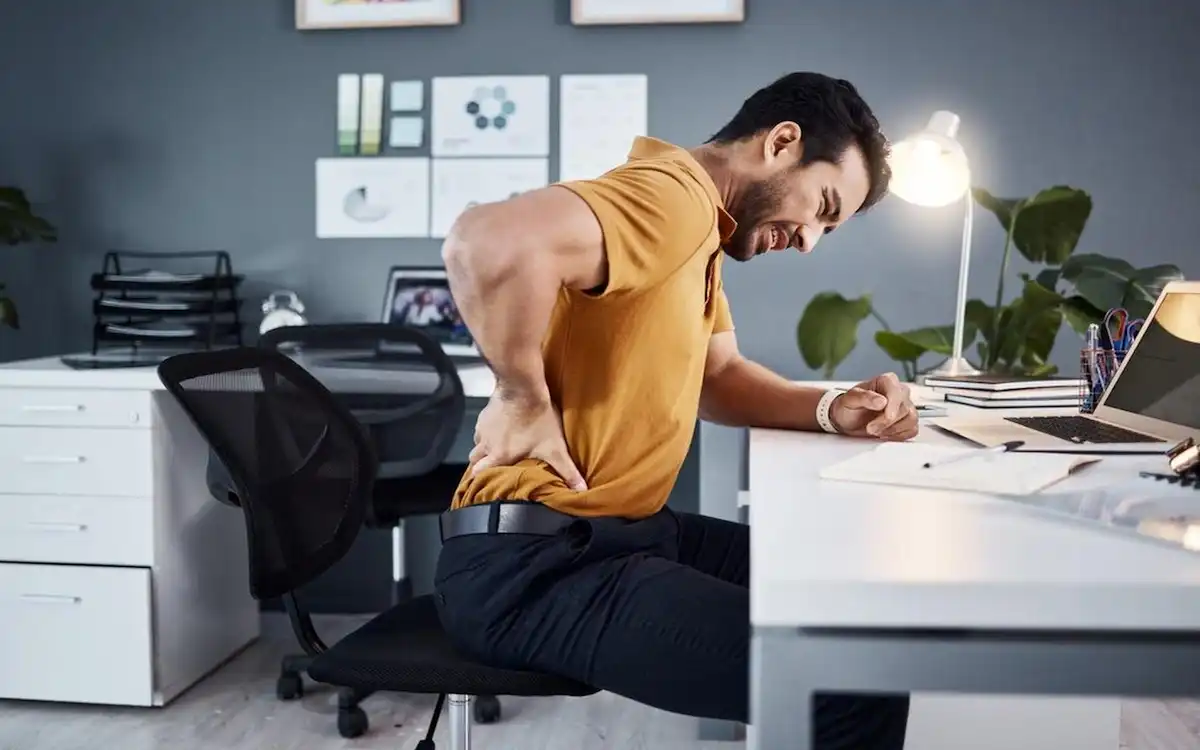One of the most common health problems people all over the world have is lower back pain. Back pain can get in the way of daily life, whether it’s from bad posture, not moving around much, or lifting something the wrong way. Luckily, some exercises can greatly reduce or even get rid of lower back pain. Regular, targeted movement not only helps but also makes the body stronger so that flare-ups don’t happen again.
Understanding Lower Back Pain
A number of things, such as strained muscles, herniated discs, or an out-of-place spine, can cause lower back pain. These problems are often caused by bad lifting techniques, sitting for long periods, and weak core muscles. It’s important to tell the difference between minor pain that comes from doing things and pain that is caused by more serious conditions like sciatica, degenerative disc disease, or spinal stenosis. If your pain is severe, goes down your legs, or lasts longer than a few weeks, you should talk to a doctor before starting any exercise plan.
Benefits Of Exercise For Lower Back Pain
It may not make sense to move when you’re hurt, but the right exercises can help a lot. Working out makes you more flexible and strengthens the muscles that support your spine, especially the ones in your core, hips, and glutes. Less stress is put on the spine during daily activities when muscles are stronger. Movement also improves circulation, which brings oxygen and nutrients to the lower back area, which speeds up recovery and lowers inflammation. Good posture and body mechanics are also encouraged by regular exercise, which is important for long-term back health.
Top Exercises For Lower Back Pain Relief
Pelvic Tilts
This easy move makes the muscles in the lower abdomen stronger, which helps keep the spine stable. Lay on your back with your feet flat on the floor and your knees bent. Pull your stomach in and press your lower back gently into the floor. Hold for a short time, and then let go. Do it 10–15 times.
Cat-cow Stretch
This movement, which comes from yoga, is a gentle way to move the spine and loosen up tight back muscles. As you breathe in, arch your back and lift your head (cow pose), then breathe out as you turn your spine and tuck your chin (cat pose). Do this eight to ten times, moving slowly each time.
Child’s Pose
The lower back and hips feel better after doing this restorative stretch. Get down on your knees, sit back on your heels, and reach your arms out in front of you on the ground. Focus on deep breathing while you hold for 20 to 30 seconds.
Bridges
Building up your glutes and hamstrings can help support your lower back. Lay on your back with your knees bent. Keep your shoulders on the ground and lift your hips toward the ceiling. Hold for a short time, then let go. Do 10 to 12 reps.
Knee-to-chest Stretch
This gentle move makes the lower back feel better when it’s tight. Lay on your back and bring one knee up to your chest. Keep the other leg flat. For 15 to 30 seconds, hold, and then switch sides.
Wall Sits
This move improves your posture and makes your legs stronger. Slide down until your knees are bent 90 degrees. Stand with your back against a wall. At first, hold the position for 10–15 seconds. Over time, hold it for longer.
Core-strengthening Movements
For a stable spine, you need a strong core. Some of the core muscles that support the spine are the transverse abdominis, the obliques, and the pelvic floor. Exercises with a focus, such as
- Planks (changed if needed): If a full plank is too hard for you, start on your knees and elbows. Aim for 15 to 30 seconds on each hold.
- Bird-Dogs: While on your knees and hands, stretch out one arm and the other leg. Keep your spine straight. Hold for a short time, then press the switch.
- Dead Bugs: Lay on your back with your arms and legs raised. Slowly lower the arm and leg on the opposite side, then return to the starting position and do the other side.
Low-impact Aerobic Exercises
Low-impact cardio can help keep you from getting stiff and help you keep a healthy weight, both of which are good for your back.
- Walking: An organic motion that encourages blood flow and mild spinal motion. Aim for 20 to 30 minutes every day.
- Swimming: It’s great for people with back pain because it gives them resistance without strain.
- Stationary Biking: Enhances circulation and endurance while supporting the back.
Low-impact aerobic exercises also release endorphins, which make pain feel less intense.
Exercises To Avoid With Lower Back Pain
Some movements can make back pain worse or even hurt you. Do not:
- Exercises with a lot of impact, like running or jumping
- Pulling heavy things with bad form
- Back bends that go deep or toe-touch stretches
- Sports moves that twist when they’re loaded as golf swings or tennis serves
Instead, focus on controlled, gentle movements and always prioritize form over intensity.
Tips For Exercising Safely With Back Pain
When dealing with back pain, safety is very important. Before each workout, do a short warm-up to get your muscles loose. For example, you could walk slowly or do arm swings. To keep from getting stiff, cool down by doing some light stretching. Don’t jerk or move quickly; always move slowly and carefully. If an exercise creates your pain worse, stop doing it right away. Make small steps forward, and don’t change anything. Over time, even 10–15 minutes a day can make a difference.
Conclusion
Working out can be one of the best ways to treat and avoid lower back pain. To make your back stronger and more flexible, you should do targeted stretches, core-strengthening exercises, and low-impact cardio. Move with purpose, pay attention to your body, and get help when you need it. One movement at a time, you can take charge of your lower back health if you do it regularly and with care.




 Importance of Hydration for Your Brain, Body, and Everyday Energy
Importance of Hydration for Your Brain, Body, and Everyday Energy  Healthiest Breakfast Cereal for Children
Healthiest Breakfast Cereal for Children  Anxiety Management Techniques
Anxiety Management Techniques  What Makes Fat in Our Body?
What Makes Fat in Our Body?  Best Diet to Reduce Risk of Diabetes
Best Diet to Reduce Risk of Diabetes  Long Term Effects from Botox
Long Term Effects from Botox